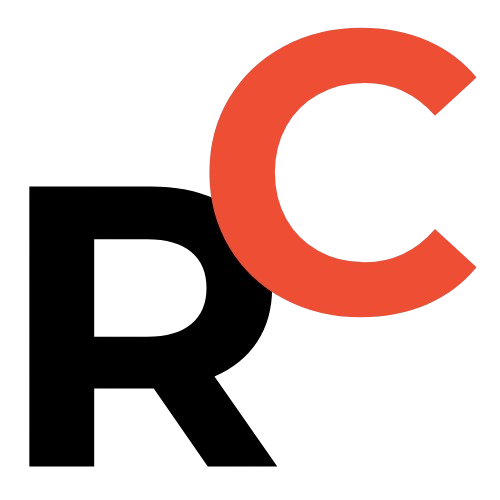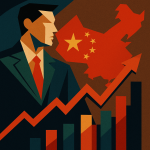Key Points
- The A+H listing surge sees a wave of A-share companies, including giants like CATL (Ningde Shidai 宁德时代), seeking Hong Kong listings since early 2025.
- Regulators are reportedly considering a new minimum market capitalization for A-share companies seeking Hong Kong listings, potentially doubling it from ¥10 billion RMB ($1.4 billion USD) to ¥20 billion RMB ($2.8 billion USD).
- This proposed threshold aligns with the existing policy for Global Depositary Receipts (GDRs) and aims to screen for stronger, higher-quality companies.
- Of the 44 companies that have already applied to HKEX, 12 companies are valued below the potential new threshold of ¥20 billion RMB ($2.8 billion USD), primarily small and medium-sized enterprises (SMEs).
- Experts believe a higher bar will enhance the overall quality of companies on HKEX and ensure a more strategic approach to Hong Kong listings, focusing on high-growth sectors.

The A+H listing surge is one of the biggest stories in Chinese finance, and it seems like things are about to get even more interesting.
Since the start of 2025, a wave of A-share companies, led by giants like Contemporary Amperex Technology Co. Limited (CATL) (Ningde Shidai 宁德时代), has been making a beeline for the Hong Kong Stock Exchange (HKEX).
The numbers don’t lie. Over 40 companies have already filed their applications, and another 30+ have announced they’re getting their paperwork ready.
But here’s the plot twist.
Whispers from the mainland suggest that regulators are considering a new rule of the road: a minimum market capitalization for A-share companies looking to score a Hong Kong listing.
Brokerage sources are buzzing that the threshold could double, jumping from ¥10 billion RMB ($1.4 billion USD) to ¥20 billion RMB ($2.8 billion USD), aligning it with the existing policy for Global Depositary Receipts (GDRs).
So, what does this mean for the stampede of companies heading to Hong Kong? Let’s break it down.
Why the Gold Rush to Hong Kong?
Listing in Hong Kong isn’t just a status symbol; it’s a strategic power-up for mainland companies.
The benefits are crystal clear:
- A Crucial Financing Window: With the Hong Kong market bouncing back, it’s a prime time to raise capital.
- Easier Follow-on Funding: Unlike the A-share market, securing additional funding in Hong Kong is a much smoother process.
- Gateway to the World: A Hong Kong listing opens the door to international expansion and attracts a global investor base.
- Value Recognition: It allows a company’s true value to be recognized by a wider, more diverse audience.

Resume Captain
Your AI Career Toolkit:
- AI Resume Optimization
- Custom Cover Letters
- LinkedIn Profile Boost
- Interview Question Prep
- Salary Negotiation Agent

The Current Pipeline: A Look at the Players
This year alone, ten major A-share companies have made the leap, including household names like Jiangsu Hengrui Medicine Co., Ltd. (Hengrui Yi Yao 恒瑞医药) and Foshan Haitian Flavouring and Food Co., Ltd. (Haitian Wei Ye 海天味业).
These aren’t small fish. Five of them boast market caps over ¥100 billion RMB ($14 billion USD).
Let’s look at the 44 companies that have already submitted their applications to the HKEX:
- ✅ All of them currently have a market cap over ¥10 billion RMB ($1.4 billion USD).
- 🚀 6 companies are valued at over ¥100 billion RMB ($14 billion USD).
- ⚖️ 26 companies fall in the ¥20 billion RMB ($2.8 billion USD) to ¥100 billion RMB ($14 billion USD) range.
- ⚠️ 12 companies are valued below the potential new threshold of ¥20 billion RMB ($2.8 billion USD).

Small Caps Join the Fray as the Trend Accelerates
Inspired by the big players, a new trend emerged this summer.
Small and medium-sized enterprises (SMEs) are now throwing their hats in the ring, accelerating their own plans for a Hong Kong debut.
Most of these smaller companies announced their intentions in July, signaling a new phase in the A+H listing boom.
Here are a few examples of the smaller players making moves:
- Shenzhen Rui Ming Technology Co., Ltd. (Ruiming Jishu 锐明技术): market cap of ¥8.2 billion RMB ($1.15 billion USD)
- Cofoe Medical Technology Co., Ltd. (Kefu Yiliao 可孚医疗): market cap of ¥7.8 billion RMB ($1.09 billion USD)
- Holo Matic Corporation (Helin Weina 和林微纳): market cap of ¥6.3 billion RMB ($882 million USD)
- Beijing Transwarp Technology Co., Ltd. (Xinghuan Keji 星环科技): market cap of ¥6 billion RMB ($840 million USD)
- Xinlei Industrial Co., Ltd. (Xinlei Gufen 鑫磊股份): market cap of ¥5.5 billion RMB ($770 million USD)
- Kutesmart Co., Ltd. (Kute Zhineng 酷特智能): market cap of ¥5.4 billion RMB ($756 million USD)
The big question is: will the door to Hong Kong soon be closing for companies of this size?

Find Top Talent on China's Leading Networks
- Post Across China's Job Sites from $299 / role, or
- Hire Our Recruiting Pros from $799 / role
- Qualified Candidate Bundles
- Lower Hiring Costs by 80%+
- Expert Team Since 2014
Your First Job Post

The Big Rumor: A New ¥20 Billion RMB Gatekeeper
The talk of the town is that mainland regulators may raise the bar for Hong Kong listings to match the standards for issuing Global Depositary Receipts (GDRs).
For context, in 2023, China tightened the rules for GDRs, setting a pretty high standard.
The current GDR policy requires companies to have an average market capitalization of no less than ¥20 billion RMB ($2.8 billion USD) over the 120 trading days before their application.
A brokerage professional confirmed the chatter: “There is indeed talk of setting a minimum market capitalization requirement… specifically an average market cap of no less than ¥20 billion RMB ($2.8 billion USD).”
This move isn’t just about creating a new hurdle; it might be about ensuring quality.

ExpatInvest China
Grow Your RMB in China:
- Invest Your RMB Locally
- Buy & Sell Online in CN¥
- No Lock-In Periods
- English Service & Data
- Start with Only ¥1,000

Why a Higher Bar Could Be a Good Thing for the Market
Li Tianyi (Li Tianyi 李天一), General Manager of Guangzhou Ruizi Capital (Guangzhou Ruizi Ziben 广州睿资资本), sees the potential threshold as a reasonable step forward.
He argues it accomplishes four key things:
- It screens for better and stronger companies to participate in the Hong Kong market.
- It enhances the overall quality of companies on the HKEX, making it more attractive to global investors.
- It unifies the standard with the existing GDR policy, creating consistency.
- It forces companies to think strategically about a Hong Kong listing, rather than just blindly following a trend.
Yan Zhaojun (Yan Zhaojun 颜招骏), a strategist at Zhongtai International (Zhongtai Guoji 中泰国际), agrees.
“I support imposing restrictions,” he said. “The Hong Kong stock market doesn’t lack IPO projects; what it lacks are high-quality IPOs.”
He believes quality is what will ultimately strengthen Hong Kong’s financing power and deliver returns for investors.
-
Li Tianyi (Guangzhou Ruizi Capital):
- Screens for better and stronger companies for the Hong Kong market.
- Enhances overall quality of companies on HKEX, attracting global investors.
- Unifies standards with existing GDR policy for consistency.
- Encourages strategic thinking about Hong Kong listing, deterring blind following.
-
Yan Zhaojun (Zhongtai International):
- Supports imposing restrictions, as HKEX lacks high-quality IPOs.
- Believes quality will strengthen Hong Kong’s financing power and deliver investor returns.

Reading the Tea Leaves: What Regulators and Investors Want
This potential new rule isn’t coming out of nowhere.
Back in April 2024, the China Securities Regulatory Commission (CSRC) (Zhongguo Zhengjuan Jiandu Guanli Weiyuanhui 中国证券监督管理委员会) stated its support for “leading mainland industry enterprises” to list in Hong Kong.
That phrase itself implies a focus on scale and quality. The rumored market cap requirement might just be putting a hard number on that sentiment.
It also aligns with what overseas investors are looking for.
Yan Zhaojun (Yan Zhaojun 颜骏) notes that global investors in Hong Kong favor companies in high-growth sectors:
- High-Tech & New Technology
- Biomedicine
- Artificial Intelligence (AI) (Rengong Zhineng 人工智能)
The market performance tells the story. The H-shares of tech and biomedicine leaders like CATL and Hengrui Medicine command a significant premium over their A-shares.
In contrast, traditional industry leaders like Haitian Flavouring have seen more modest performance since their Hong Kong listing.
This suggests that a higher market cap, combined with a focus on innovative industries, could be the recipe for a healthier and more dynamic Hong Kong market.
- High-Tech & New Technology: Companies at the forefront of technological innovation.
- Biomedicine: Enterprises involved in medical research, development, and healthcare.
- Artificial Intelligence (AI): Companies focused on AI advancements and applications.

The Bottom Line: Guiding the Flow, Not Stopping It
Let’s be clear: this isn’t about shutting down the A+H listing pipeline.
It’s about guiding it.
Restricting smaller-cap companies could be a way to prevent a “blind rush” during periods of market hype, ensuring the trend remains orderly and sustainable.
“Market demand needs reasonable guidance,” commented one brokerage professional. “We need to protect this hard-won positive situation.”
After all, a Hong Kong listing isn’t a guaranteed win, especially for smaller companies. Blindly rushing into a market dominated by institutional investors can be a risky move, and many companies end up voluntarily delisting from the HKEX each year.
Ultimately, a higher threshold could ensure that the ongoing A+H listing surge benefits not just the companies involved, but the long-term health and credibility of the entire Hong Kong market.





![China's A-Share Market Sees Surge: 1.92 Million New Accounts in April, Up 31% YoY Reveals Strong Investor Interest [FreshFromChina]](https://freshfromchina.com/wp-content/uploads/2025/05/chinas_a_share_market_sees_surge_192_million_new_accounts_in_april_up_31_yoy_reveals_strong_investor_interest.png____FreshFromChina-150x150.png)
